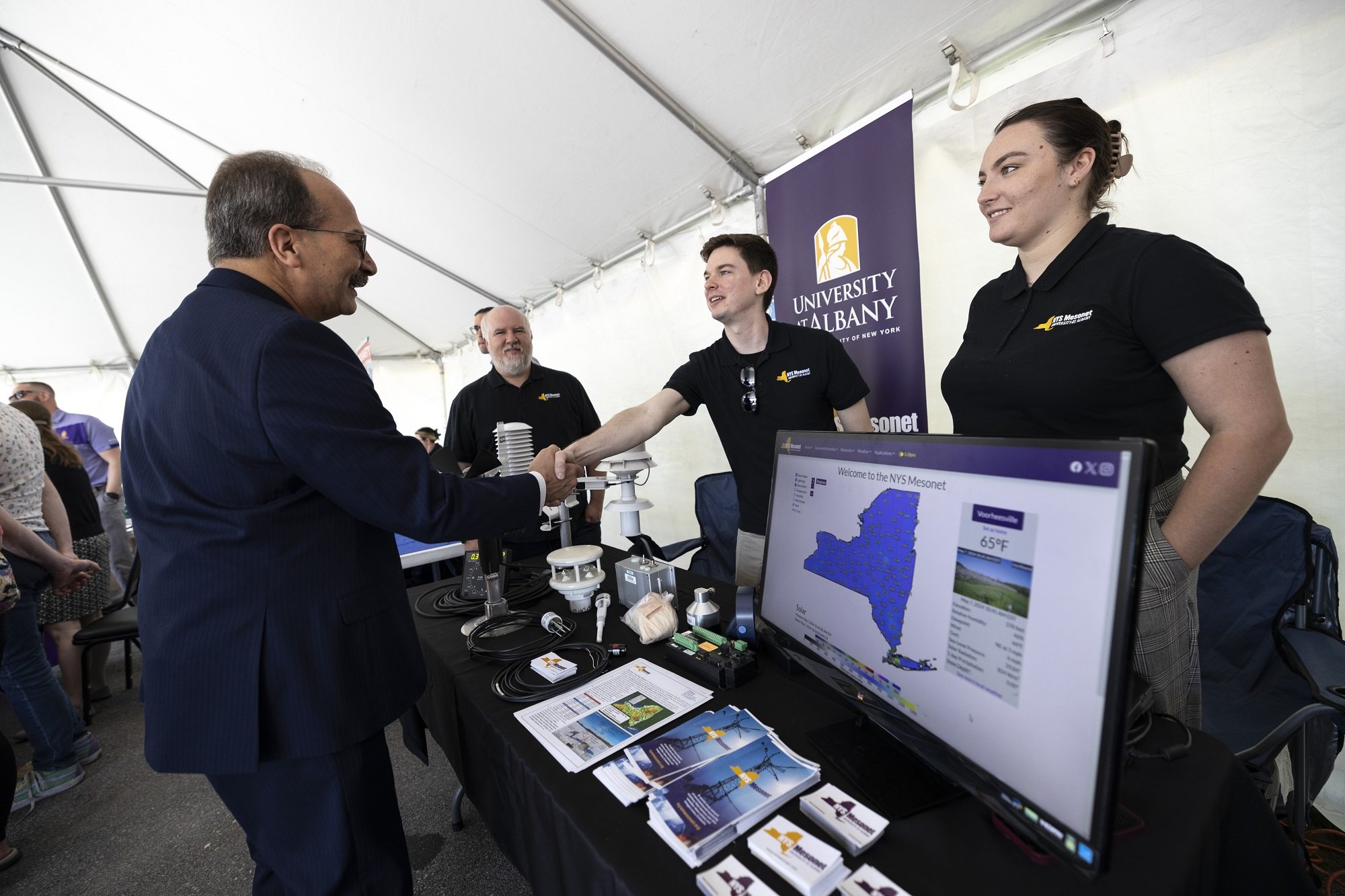UAlbany Joins Weather and Emergency Management Officials for Hurricane Awareness Tour
ALBANY, N.Y. (May 9, 2024) — Representatives from the University at Albany joined weather and emergency management officials, including the heads of the National Weather Service and the National Hurricane Center, at the Albany International Airport on Monday for a stop on the 2024 Hurricane Awareness Tour.
Hurricane experts from the National Oceanic and Atmospheric Administration (NOAA) and the U.S. Air Force are visiting five East Coast locations this week to raise awareness about the importance of being prepared for hurricane events.
The visits are highlighted by tours of a USAF Reserve WC-130J and NOAA WP-3D Orion Hurricane Hunter, used to fly directly into tropical cyclones and analyze data in real time.
UAlbany President Rodríguez was at the Albany tour stop, along with 60 students from the Department of Atmospheric and Environmental Sciences and College of Emergency Preparedness, Homeland Security and Cybersecurity.
There were also staff on site from the State Weather Risk Communication Center, a first-of-its-kind partnership that leverages UAlbany’s expertise in atmospheric sciences to help state and local emergency managers prepare for and respond to severe weather, and the New York State Mesonet, a statewide observational weather network operated by UAlbany.
“The University at Albany is proud to collaborate with our colleagues in state government including the New York State Department of Homeland Security and Emergency Services, as well as our colleagues at the National Weather Service, the National Hurricane Center, and the National Oceanic and Atmospheric Administration to advance hurricane monitoring, said Rodríguez.
“Our expertise in atmospheric and climate science, data analysis, artificial intelligence, and emergency preparedness make UAlbany a natural partner for this important work. With climate change and severe weather posing increased threats to New Yorkers, UAlbany’s resources like the New York State Mesonet and the State Weather Risk Communication Center are critical to our ability to understand those threats and protect our neighbors and our economy.”
Monday’s event was special for Ryan Torn, chair and professor in the Department of Atmospheric and Environmental Sciences. In 2012, he was part of a group of scientists who flew into Hurricane Sandy aboard a NOAA Hurricane Hunter.
Sandy wreaked havoc on New York City, causing an estimated $19 billion in damages and lost economic activity across the five boroughs. There have been 15 tropical storm systems that have directly impacted New York since 2012, and their frequency has doubled over the past six years.
“New York has been severely impacted by a variety of hurricanes over the years,” said Torn. “Bringing this event to Albany is an important recognition by the National Weather Service that we must too be prepared for these devastating events.”
Allison Lancia, a junior in the Department of Atmospheric and Environmental Sciences, was among the UAlbany students who toured the aircraft. She’s interning this summer at the National Weather Service’s Albany office, which is located inside UAlbany’s ETEC research and development complex.
“This experience was fascinating. Before today, I did not know much about what these planes looked like, or the monitoring equipment inside” said Lancia, who is also interning at the NYS Mesonet. “We’re offered so many opportunities as students here, whether it be working at ETEC with the Mesonet and National Weather Service, or events like this one.”
Last year, there were 20 named storms during the Atlantic hurricane season, the fourth for most-named storms in a year since 1950, according to NOAA and the National Hurricane Center. The 2024 season, which will run from June 1 to Nov. 30, is expected to be extremely active.
Photos by Patrick Dodson










